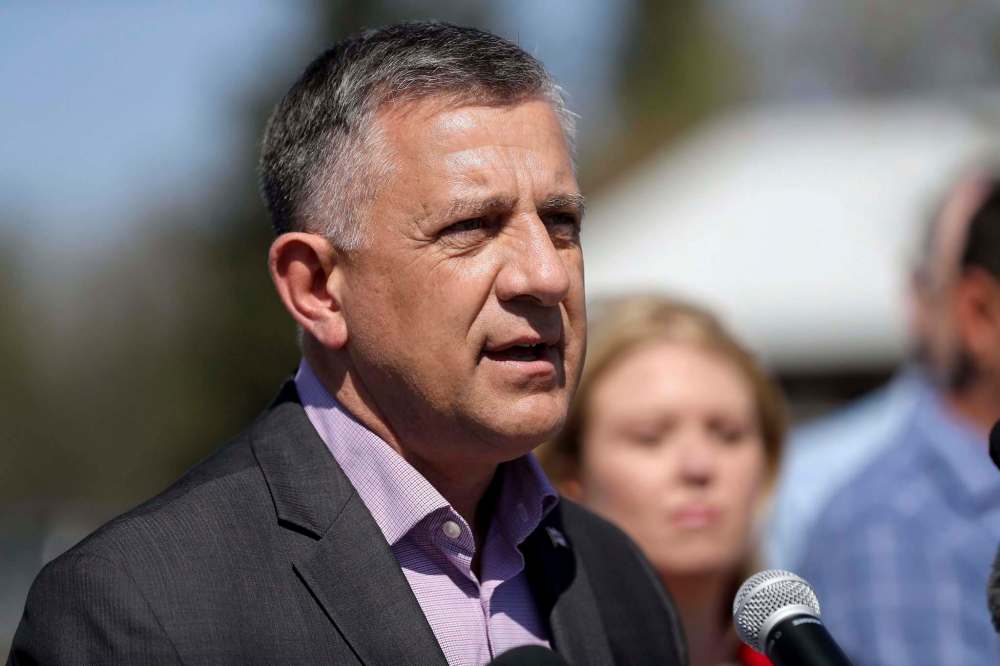Emails reveal confusion over asylum seekers
Authorities struggled to deal with 2017 spike in Emerson border crossings
Advertisement
Read this article for free:
or
Already have an account? Log in here »
To continue reading, please subscribe:
Monthly Digital Subscription
$0 for the first 4 weeks*
- Enjoy unlimited reading on winnipegfreepress.com
- Read the E-Edition, our digital replica newspaper
- Access News Break, our award-winning app
- Play interactive puzzles
*No charge for 4 weeks then price increases to the regular rate of $19.00 plus GST every four weeks. Offer available to new and qualified returning subscribers only. Cancel any time.
Monthly Digital Subscription
$4.75/week*
- Enjoy unlimited reading on winnipegfreepress.com
- Read the E-Edition, our digital replica newspaper
- Access News Break, our award-winning app
- Play interactive puzzles
*Billed as $19 plus GST every four weeks. Cancel any time.
To continue reading, please subscribe:
Add Free Press access to your Brandon Sun subscription for only an additional
$1 for the first 4 weeks*
*Your next subscription payment will increase by $1.00 and you will be charged $16.99 plus GST for four weeks. After four weeks, your payment will increase to $23.99 plus GST every four weeks.
Read unlimited articles for free today:
or
Already have an account? Log in here »
Hey there, time traveller!
This article was published 21/05/2018 (2722 days ago), so information in it may no longer be current.
OTTAWA — Federal bureaucrats scrambled to respond to an increase in asylum claimants from the U.S. near the Emerson border crossing in early 2017 as U.S. immigration policy was constantly shifting, hundreds of emails obtained by the Free Press show.
Some of the most senior officials working for Public Safety Canada, the Canada Border Services Agency and the RCMP sent emails during weekends and evenings to track the number of claimants crossing into Manitoba and Quebec. They kept an eye on whether officers could keep up and how the media reported the story.
It took Public Safety Canada 50 weeks to provide the emails, which were sent in the first two months of 2017, after receiving a freedom-of-information request.

In early December 2016, just a few people had crossed into Manitoba near Emerson. A loophole in the Safe Third Country Agreement forbids most people from the U.S. from filing refugee claims at official border stations. So, many made their way on foot across the border near the official crossing. Then, they were able to apply for refugee status.
Conservative Ted Falk, who is the area’s MP, had raised the issue with Public Safety Minister Ralph Goodale.
“My concern is, in effect, that the (loophole) rewards those who circumvent the port of entry,” Falk wrote, making it “unfair to those who try to abide by our laws” and “incredibly dangerous” for those who don’t.
At first, the number of claims in Manitoba didn’t cause concern. There were just 19 in January 2017. But in February, it jumped to 142.
While federal authorities in Quebec towns took asylum seekers into nearby buildings, their Manitoba counterparts had to contend with a widespread rural area.
They stationed heated vans and medical services nearby to warm the claimants, some of whom had frostbite.
Local resources were stretched thin.
In a Feb. 15, 2017, letter Emerson-Franklin reeve Greg Janzen requested “immediate attention” and financial help. He wrote that locals “do not have the resources to keep up” with claimants showing up in the middle of the night. Two weeks later, Goodale visited Emerson and announced $30,000 would be given to local firefighters.
Around that time, the CBSA noted a 25 per cent jump in refugee claims filed at Emerson from 2016.
“Claimants no longer consist of single males from Somalia. Rather asylum seekers from Djibouti, Eritrea, Ghana as well as families,” reads an internal slideshow.
Meanwhile, officials monitored the fallout of U.S. President Donald Trump’s Jan. 27 executive order to restrict immigrants and refugees from seven countries, which had Muslim majorities.
Amid the chaos at American airports and challenges being launched at state-level courts, Canadian officials sought answers on how the so-called “Muslim ban” applied to Canadians who held U.S. visas as well as those who had dual citizenship from the affected countries.
At a Montreal summit with American counterparts in mid-February, immigration officials got their hands on a draft memo from the U.S. Department of Homeland Security that detailed how Trump’s order should be put into practice.
“The memo also notes a seldom-used provision in the law to return asylum seekers to contiguous territory from which they entered the U.S., namely Mexico, but (it) could also apply to Canada,” reads a note exchanged by senior officials. (It appears the U.S. has not done so since then.)
U.S. and Canadian border officials discussed ways to improve “radio interoperability,” information sharing and coast guard patrols.
The number of crossings continued to grow, and by Feb. 22, Goodale’s staff was warned that the spike in asylum seekers could wear down Mounties and border guards.
“If the situation were to continue, RCMP and CBSA officer health could be affected as a result of excessive overtime. In addition, the RCMP estimates that there would be an impact on other more serious criminality given the diversion of resources.”

The RCMP head for federal policing, Gilles Michaud, put it even stronger in an email a week earlier: “Although we are good to go for a couple of weeks or so, we can not sustain this without having an impact on other (and more) serious criminality and health for our officers.”
This spring, the federal Liberals allocated $173.2 million to deal with staffing at the border and to help clear a backlog in refugee-claim hearings.
The emails also show there was a huge amount of media queries, with scores of bureaucrats asked to pull up data and responses, often in anticipation of reporters’ questions. At times, officials couldn’t compare the number of crossings with data from 2016, due to issues with the CBSA’s internal records system.
Leading up to Transport Minister Marc Garneau’s March 2, 2017, visit to Washington, his department’s top civil servant requested talking points on “border crossing refugees,” so Garneau could address the issue with media and with his U.S. counterparts.
A month earlier, Natural Resources Minister Jim Carr’s office made a similar request for talking points, in case journalists asked about crossings during a teleconference from his trade mission in Mexico.
On the weekend of Feb. 11, CBSA officers tipped off Goodale’s office that media were filming the crossings in Quebec.
“They filmed a family of three being intercepted. The RCMP have advised us that they will be getting filmed all day and (the) media outlet has advised the same via social media,” reads a note from an official, adding that the journalists hadn’t violated any privacy rules.
By late February, Goodale’s media team was fielding scores of media queries. Officials seemed perplexed about how to respond to a Feb. 24 question from Reuters, about a security expert who warned that televised images of people crossing on foot “could encourage militant groups to send operatives into Canada to launch attacks.”
The emails show a slight gap between Ottawa’s messaging on asylum claimants and how bureaucrats referred to the issue.
The federal Liberals have stressed that people crossed on foot before the Trump administration took office, and have blamed the uptick on false rumours that Canada has a lenient refugee system. But a Feb. 23, 2017, briefing note points out that crossings near Emerson were almost unheard of during winter months, and that “the U.S. political situation may be accelerating this movement.”
Meanwhile, a question period note prepared for Goodale uses the term “illegal border crossings,” though the federal Liberals have insisted on using the term “irregular” migration.
Those who don’t enter Canada at a border crossing violate federal law, but are shielded from prosecution when they file a quick asylum claim.
Lately, Conservative MPs have taken to shouting “illegal” in the Commons each time a minister mentions “irregular” crossings.
dylan.robertson@freepress.mb.ca


